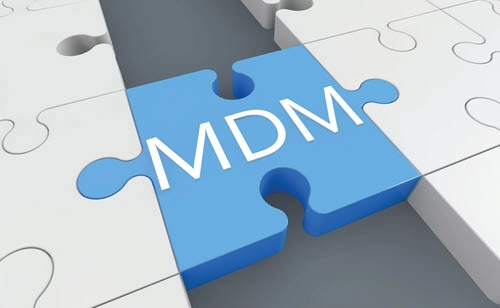Pediatric Coding Alert
Take This Quiz, See if Your 2021 MDM Knowledge Is on the Level
How well do your answers match up with those of our expert? Now that your office/outpatient evaluation and management (E/M) coding has to comply with the 2021 CPT® guidelines, here’s a quick pop quiz to see if you can handle the change. Simply look at the following scenarios, then turn to the American Medical Association’s (AMA’s) medical decision making (MDM) table at www.ama-assn.org/system/files/2019-06/cpt-revised-mdm-grid.pdf to see what MDM level and office/outpatient E/M code you would assign to each one. Question 1: An established 2-year-old patient presents with a nosebleed that began several hours earlier according to the patient’s mother, who is the historian. The pediatrician examines the patient’s nostrils and finds a small foreign body in one of them. Assessment and Plan: Dx: epistaxis; foreign body, nose. The pediatrician removes the foreign body with forceps, then packs the patient’s nose with gauze, which is left in the patient’s nostril for 30 minutes. The pediatrician tells the mother to call if the patient’s nose bleeds again. Question 2: A new 13-year-old patient presents with symptoms of asthma that occur daily and interfere with his ability to lead a normal life. This is confirmed by the patient’s mother, who is present at the encounter and adds to the history. The pediatrician administers a pulmonary function test (PFT), which records a forced expiratory volume in 1 second (FEV1) of around 80 percent. Assessment and Plan: Dx: Asthma, unspecified. The pediatrician orders an albuterol inhaler and explains its use, then arranges a follow-up appointment to monitor the condition. Question 3: An established 16-year-old female patient sees the pediatrician saying that she was experiencing fatigue and weight loss. The pediatrician determines the patient’s conditions are due to stress caused by her parent’s separation. Assessment and Plan: Dx: Moderate depression. The pediatrician administers and reviews a patient health questionnaire (PHQ). The pediatrician tells the patient she should talk with a counselor and asks the patient to sign a contract stating that she will not hurt herself. The pediatrician also asks her to call for any help should she get more depressed or have an anxiety attack and discusses medication possibilities in the future if needed. Total time spent in the visit, including review of the PHQ test, is 31 minutes. Think you know the answers? Turn to page 5 and find out!
Pediatric Coding Alert
- Preventive Care:
Develop Your Screening and Testing Coding Knowledge With These 4 Tips
Don’t forget to heed AAP’s advice and guidance. Age-appropriate screens or tests that assess a [...] - Coding Quiz:
Take This Quiz, See if Your 2021 MDM Knowledge Is on the Level
How well do your answers match up with those of our expert? Now that your [...] - ICD-10 Coding:
Ask These Questions, Improve Your Musculoskeletal Dx Coding
Time to make choosing the right M00-M99 code pain-free. You know all too well that [...] - Coding Quiz Answers:
Check Your Answers to Our MDM Coding Quiz
Time to find out how well you’re dealing with the 2021 office or outpatient E/M [...] - You Be the Coder:
No Dx? No Certification? Use This Code for Nutrition Counseling
Question: Our pediatrician saw a patient who is putting on weight but whose body mass [...] - Reader Questions:
Depend on Parent History for E/M Data Element
Question:Under the 2021 office/outpatient evaluation and management (E/M) guidelines, can a parent be regarded as [...] - Reader Questions:
Follow These Guidelines for Correct Immunization, Well Visit Dx Sequencing
Question: I know that Z23 is the primary diagnosis code for immunizations, but does it [...] - Reader Questions:
Know These Terms for Correct Z79 Use
Question: When would I use Z79.899? And what do the terms “long term” and “current” [...]

